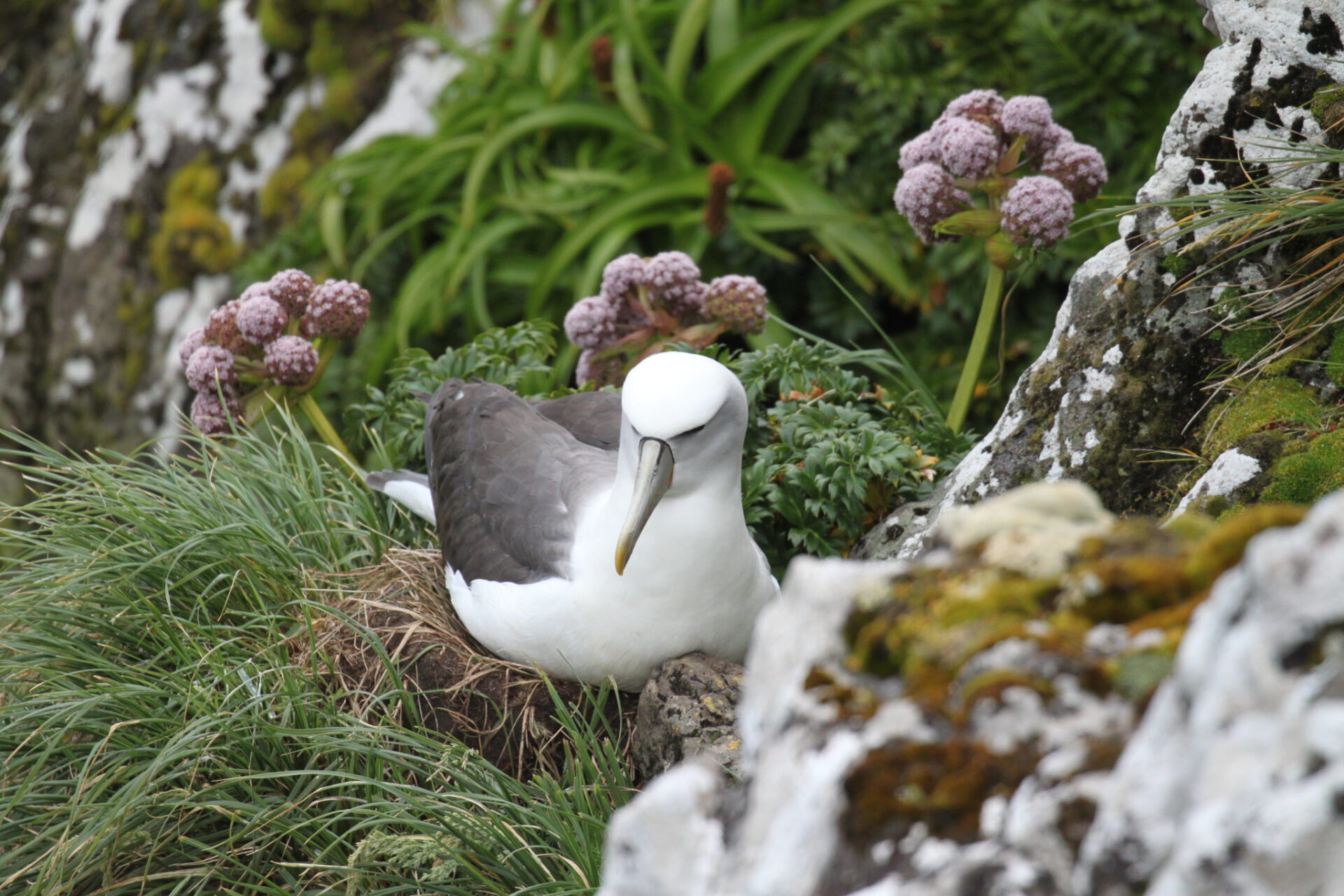Motu Ihupuku / Campbell Island (663km from Bluff)

Motu Ihupuku is Aotearoa’s second largest Sub-Antarctic island, covering an area of 112.7km². It rains for over 290 days per year on this island and receives an average of one hour of sunlight during the months of June and July. The valleys and mountains are shaped by fierce westerly winds and the coastline is continuously scarped by powerful south swells, shaping this island into a reflection of the local environment.
The history of Motu Ihupuku dates back to 1810 when it was discovered by Captain Frederick Hasselburgh, an Australian sealer who drowned in the island’s Perseverance Harbour as his ship the Perseverance capsized. Since then many have visited the island, however, finding others that have been to this remote location appears to be somewhat of a rarity.
Arriving at Motu Ihupuku was exactly what you would expect: cold, dark, and gloomy.

As we cruised through Perseverance Harbour and arrived at Tucker’s Cove, we took our first steps on land.

The island felt empty, as if it had been abandoned and no one had ever returned.
Scientists and Department of Conservation (DOC) rangers are the most frequent visitors to Motu Ihupuku, however, the amount of time they spend here is limited by the conditions and their resources … being 663km south of the mainland comes with quite a few challenges.
The weathering of their huts provides an insight into the harsh conditions experienced here, conditions that make this island such an interesting and unpredictable place.

Sea lions roam the island. They can be found in the water, along the shore, and even on top of the island’s summit, Mt Honey, at 558m above sea level.

There are some things, however, that will make you question what else is lurking around the waters of this remote Sub-Antarctic location.

It truly is a strange and mysterious place.
As dark, gloomy, and uninviting as this island may appear to be, there is a remarkable essence of colour that can be found towards the summit. A boardwalk ascends from Tucker’s Cove to Mt Lyall where the obscurity of the Megaherbs give that feeling of living in a Dr Seuss world.

Megaherbs are the native flora that make the Sub-Antarctic Islands such a remarkable place. These plants survived the last glacial maximum (20 thousand years ago) and have become well adapted to the cold, harsh, and windy environment. Their mystical appearance contributes to the island’s unique character.

As the boardwalk weaves through the megaherb fields, nesting southern royal toroa (albatross) keep a close eye on those who walk past.

Motu Ihupuku is the main breeding ground for southern royal toroa. During a survey carried out between 2004-08, DOC estimated 8,300 – 8,700 breeding pairs to be on the island. These birds are remarkably large, with wingspans exceeding three meters and an average body weight of 8.5kg. They live to ages above 40 years old and identify with a life-long companion.
The dynamics of a southern royal toroa relationship are rather simple, yet the task each bird carries out is very much adventurous. The breeding southern royal toroa stays on the Island and takes nearly a year to rear the chick, while the non-breeding southern royal toroa will set out on a food-foraging journey, circumnavigating the Southern Ocean before returning to their life-long companion.


